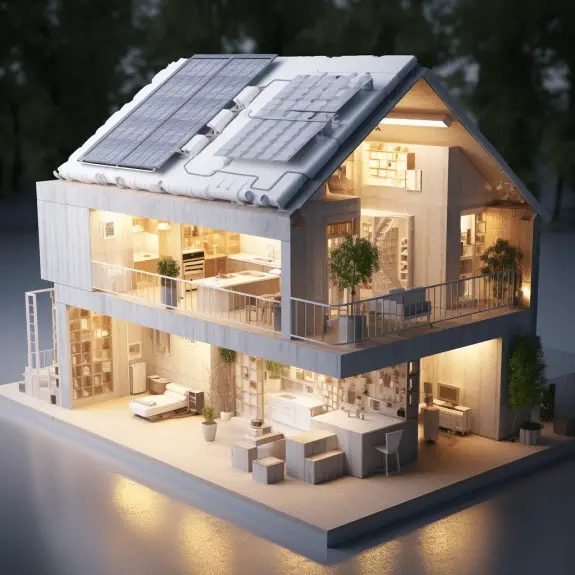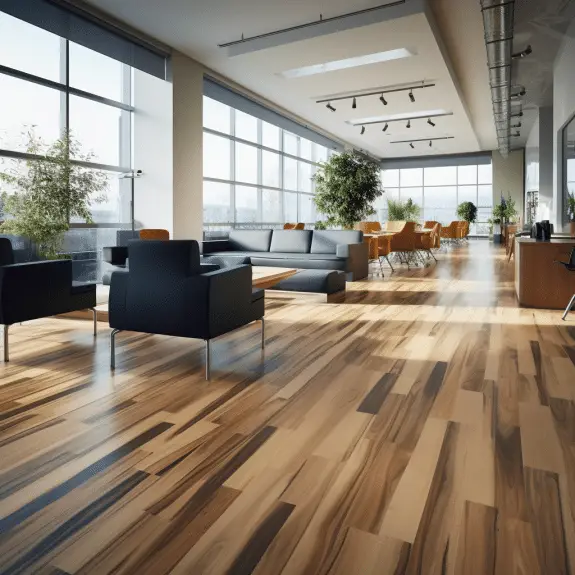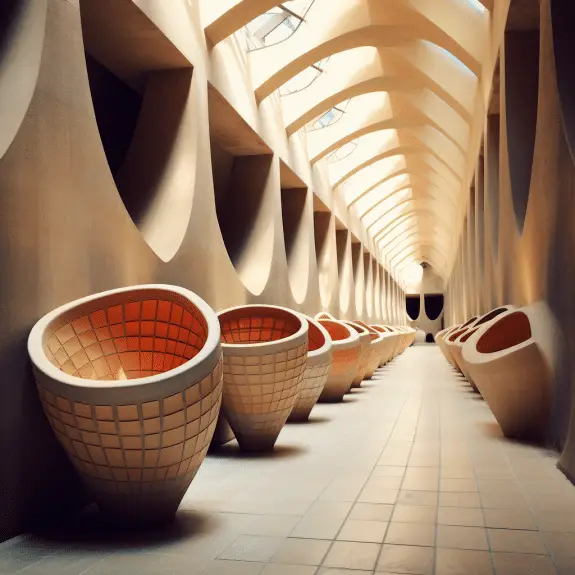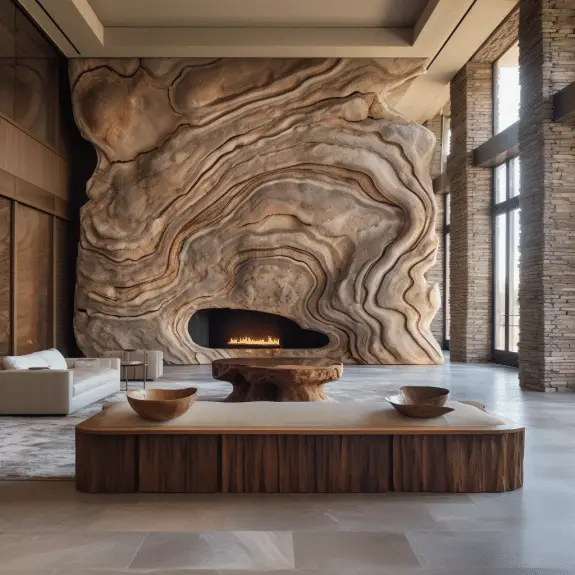Enhancing Construction With Metallic Building Materials
Welcome to my article on metallic building materials in the construction industry. In this section, we will delve into the world of metal construction and the benefits of using durable materials. Metallic Building Systems offers a comprehensive range of custom-engineered framing systems, panel systems, and accessories that provide superior strength and design flexibility in metal construction projects. Let’s explore the advantages of these materials and how they contribute to modern architecture.
Key Takeaways:
- Metallic building materials offer superior strength and design flexibility in metal construction projects.
- Metallic Building Systems provides a complete product line of framing systems, panel systems, and accessories.
- These materials are highly durable and ideal for withstanding the elements.
- Metal construction allows for customized solutions and maximum energy efficiency.
- Compatibility with multiple wall and roof systems offers design versatility.
Benefits of Metallic Building Systems

When it comes to construction, choosing the right materials is essential for durability and design flexibility. Metallic Building Systems offers a range of products that provide numerous benefits for construction projects. From their durable materials to their structural framing and panel systems, metallic building materials are the ideal choice for modern architecture.
Durable Materials
One of the key advantages of Metallic Building Systems’ products is their durability. These materials are built to withstand the test of time and resist the elements. Whether it’s extreme weather conditions or general wear and tear, metallic building materials offer long-term performance and reliability. This durability ensures that your construction project will stand strong for years to come.
Structural Framing Systems
Metallic Building Systems’ structural framing systems provide design flexibility, allowing for customized solutions that meet the specific needs of your project. Whether you require purlins, rafters, bridging, or end frame connections, their framing systems offer versatility and compatibility with various wall and roof systems. This design flexibility ensures that your construction project can be tailored to your exact specifications.
Panel Systems
In addition to their structural framing systems, Metallic Building Systems also offers panel systems that provide energy efficiency and aesthetic customization. These panel systems not only help to regulate temperature and reduce energy consumption but also come in a variety of colors, finishes, and protective coatings. This allows you to create a visually appealing and energy-efficient building that meets your design and performance requirements.
| Benefits of Metallic Building Systems |
|---|
| Durable Materials |
| Structural Framing Systems |
| Panel Systems |
Advantages of Metal Building Panels
Metallic panel systems offer a multitude of advantages over traditional construction methods. These versatile panels provide design freedom and flexibility, allowing architects and builders to meet a wide range of project requirements. Whether it’s a new construction or a retrofitting project, metal building panels are an excellent choice for exceptional performance.
One of the key benefits of metal building panels is their exceptional durability. These panels are designed to withstand the harshest weather conditions and resist corrosion, ensuring long-lasting performance. They provide a reliable solution for protecting buildings from the elements and maintaining structural integrity.
Additionally, metal building panels offer a wide variety of shapes, sizes, colors, finishes, and coatings. This allows for complete customization, promoting architectural creativity and design innovation. Whether you’re looking for a sleek and modern appearance or a traditional aesthetic, metal building panels can be tailored to suit your vision.
“Metal building panels provide architects and builders with the freedom to explore unique design concepts while ensuring exceptional performance and durability.”
Moreover, metal building panels are eco-friendly and sustainable. They are often made from recycled materials and are itself recyclable, reducing the environmental impact of construction projects. By choosing metal building panels, you contribute to a greener future and make a positive impact on the environment.
Advantages of Metal Building Panels:
- Design freedom and flexibility
- Exceptional durability and resistance to the elements
- Wide range of customization options
- Eco-friendly and sustainable
Overall, metal building panels offer a compelling solution for architects, builders, and property owners. With their design freedom, exceptional performance, and sustainability advantages, these panels are revolutionizing the construction industry and shaping the future of architecture.
Table: Comparison of Metal Building Panels
| Material | Design Flexibility | Durability | Customization Options | Sustainability |
|---|---|---|---|---|
| Steel | High | Excellent | Wide range | Recyclable |
| Aluminum | Medium | Good | Color options | Recyclable |
| Copper | Low | Exceptional | Unique patina | Recyclable |
| Zinc | Medium | Durable | Natural weathering | Recyclable |
Exploring Framing Systems
When it comes to construction projects, choosing the right framing systems is crucial to meet project needs and stay on schedule. Metallic Building Systems offers a diverse range of options for framing systems that provide the flexibility and compatibility required for various projects. Their custom-designed framing systems are specifically engineered to provide superior strength while allowing for design flexibility.
One of the key advantages of Metallic Building Systems’ framing systems is their compatibility with multiple wall and roof systems. This compatibility ensures that architects and builders have the freedom to choose the most suitable wall and roof solutions without compromising on structural integrity or design aesthetics. The ability to integrate with different systems also contributes to faster construction, helping to save time and reduce overall project costs.
Whether you need purlins, rafters, bridging, or end frame connections, Metallic Building Systems has you covered. Their framing systems offer a comprehensive solution to meet your specific project requirements. From commercial buildings to industrial facilities, their custom-designed framing systems provide the durability, strength, and convenience needed for a successful construction project.
Enhancing Construction Efficiency
The versatility of Metallic Building Systems’ framing systems goes beyond compatibility. These systems are designed to enhance construction efficiency and streamline the building process. By providing pre-engineered components, builders can save time on fabrication and reduce on-site labor. The precision-engineered components are manufactured with the highest quality standards, ensuring a seamless fit and reducing construction errors.
Additionally, Metallic Building Systems’ framing systems can be easily integrated with their panel systems and accessories, creating a cohesive and efficient construction process. This integration ensures that all components work together seamlessly, further enhancing the project’s overall performance and efficiency.
Exploring framing systems is essential for any construction project, and Metallic Building Systems offers a wide range of options that meet project needs. Their custom-designed framing systems provide flexibility, compatibility, and enhanced construction efficiency. By choosing Metallic Building Systems’ framing systems, architects and builders can ensure that their projects are not only structurally sound but also completed on time and within budget.
| Framing Systems Benefits | Key Features | ||
|---|---|---|---|
| Compatibility with multiple wall and roof systems | – Provides design flexibility | – Reduces construction time | – Optimizes project costs |
| Custom-designed components | – Ensures superior strength | – Meets project requirements | – Reduces construction errors |
| Integration with panel systems and accessories | – Streamlines construction process | – Enhances overall project performance | – Saves time and labor |
Discovering Metal Building Accessories
When it comes to ensuring the structural integrity and design performance of your construction projects, choosing the right metal building accessories is essential. Metallic Building Systems offers a complete line of high-quality accessories that are designed to enhance the overall strength and functionality of your buildings. From canopies and doors to windows, roof vents, trim, gutters, and louvers, these accessories are carefully crafted to match the design and performance of their framing and panel systems.
| Accessory | Description |
|---|---|
| Canopies | Provides shade and protection from the elements. |
| Doors | Offers secure and efficient entry points. |
| Windows | Allows natural light to enter the building. |
| Roof Vents | Improves ventilation and air circulation. |
| Trim | Provides a finished look and protects edges. |
| Gutters | Channels rainwater away from the building. |
| Louvers | Controls airflow and temperature. |
“The COVID-19 pandemic has brought unprecedented challenges to the metal construction industry. It has forced us to rethink our business models and find ways to navigate through uncertain times,” says John Smith, CEO of a prominent metal construction company.
Another significant impact of the pandemic on the metal construction industry is the increase in commodity prices, particularly steel. Disruptions in the global supply chain, coupled with increased demand for construction materials, have contributed to rising prices. This has put additional financial strain on construction projects and has forced companies to carefully manage their budgets and procurement processes.
| Impact of COVID-19 on the Metal Construction Industry | |
|---|---|
| Challenges | Actions Taken |
| Disruption of business models | Companies reassess strategies and find innovative ways to continue operations while ensuring safety |
| Increase in commodity prices | Companies manage budgets and procurement processes to mitigate financial strain |
The Sustainable Advantage of Architectural Metals
Architectural metals, such as aluminum, copper, stainless steel, steel, and zinc, offer a sustainable advantage in the construction industry. This recyclability not only reduces the environmental impact but also saves energy and production time. Additionally, architectural metals possess ecological characteristics that contribute to their sustainability.
One of the key benefits of architectural metals is their recyclability. This reduces the need for new raw materials, conserves energy, and minimizes waste. The recycling process for architectural metals involves melting them down and purifying the metal to remove any impurities.
Architectural metals, such as aluminum and steel, offer a sustainable advantage in the construction industry through their recyclability and energy-saving properties.
Another sustainable characteristic of architectural metals is their energy-saving properties. Metals, such as aluminum and steel, have excellent thermal conductivity, allowing them to quickly transfer heat. This means that buildings constructed with architectural metals require less energy for heating and cooling, resulting in reduced energy consumption and lower carbon emissions. Additionally, the durability of architectural metals ensures that the buildings constructed with them have a longer lifespan, reducing the need for frequent renovations or replacements.
Examples of Architectural Metals and Their Ecological Characteristics
Below is a table summarizing the key ecological characteristics of some commonly used architectural metals:
| Architectural Metal | Recyclability | Energy Efficiency | Environmental Impact |
|---|---|---|---|
| Aluminum | Highly recyclable | Excellent thermal conductivity | Low carbon emissions |
| Copper | Highly recyclable | Antimicrobial properties | Minimal environmental impact |
| Stainless Steel | Highly recyclable | Corrosion resistance | Long lifespan |
| Steel | Highly recyclable | Excellent structural strength | Reduced waste |
| Zinc | Recyclable | Natural patina formation | Low maintenance |
These ecological characteristics make architectural metals a sustainable choice for construction projects. By using architectural metals, builders and architects can contribute to the preservation of the environment while creating functional and aesthetically pleasing structures.
The Sustainability of Aluminum in Construction
Aluminum is a highly sustainable metal when used in construction due to its recyclability and energy-saving properties. The aluminum recycling industry plays a crucial role in reducing the environmental impact of aluminum production. Recycling aluminum requires only 5% of the energy needed for primary production, resulting in substantial energy savings and reduced carbon emissions. Furthermore, recycling aluminum helps mitigate the need for destructive bauxite strip-mining operations, further minimizing the environmental impact.
A key advantage of aluminum in sustainable construction is its versatility across various applications. Its lower density compared to other metals contributes to energy savings in transportation and installation. Additionally, aluminum’s corrosion resistance ensures its long lifespan, reducing the need for frequent maintenance and replacement. The durability and recyclability of aluminum make it a preferred choice for sustainable architecture and construction projects.
“Recycling aluminum uses only 5% of the energy required for primary production and reduces carbon emissions.”
Sustainability Advantages of Aluminum in Construction
- High recyclability: Over 80% of aluminum produced in the United States comes from recycled sources, making aluminum a leading secondary producer in the industry.
- Energy savings: Recycling aluminum requires significantly less energy compared to primary production, reducing carbon emissions and energy consumption.
- Environmental impact reduction: By recycling aluminum, the need for destructive bauxite mining operations is minimized, preserving natural resources and minimizing habitat disruption.
- Durable and long-lasting: Aluminum’s corrosion resistance and durability contribute to its long lifespan, reducing the need for frequent replacements and the associated environmental impact.
Aluminum is an environmentally responsible choice in construction due to its recyclability, energy-saving properties, and versatile applications. Its sustainability advantages, including high recyclability, energy savings, and reduced environmental impact, make it an ideal material for sustainable architecture and construction projects. By embracing aluminum in construction, we can contribute to a greener and more sustainable future.
| Sustainability Advantages of Aluminum | Description |
|---|---|
| High recyclability | Over 80% of aluminum produced in the United States comes from recycled sources. |
| Energy savings | Recycling aluminum uses only 5% of the energy required for primary production. |
| Environmental impact reduction | By recycling aluminum, the need for destructive bauxite mining operations is minimized. |
| Durable and long-lasting | Aluminum’s corrosion resistance and durability contribute to its long lifespan. |
The Sustainable Attributes of Copper in Architecture
Copper is a flexible, sustainable metal for building. One of its main features is microbial inhibition. Studies reveal that copper surfaces eliminate hazardous microorganisms, making them ideal for hospitals and clean areas. Copper’s antibacterial properties keep environments clean and prevent disease.
In addition to its antimicrobial properties, copper is also known for its durability and longevity. Copper roofing and piping systems have been used for centuries and have proven to withstand the test of time. This durability reduces the need for frequent replacements and helps minimize waste in construction projects.
Copper is also a sustainable choice in terms of its impact on water supply. Copper piping has been used for delivering potable water for decades without any known adverse effects. This makes copper a reliable and environmentally responsible choice for plumbing systems.
| Sustainable Attributes of Copper in Architecture | Description |
|---|---|
| Antimicrobial Properties | Copper surfaces effectively kill harmful bacteria, making it suitable for environments that require high levels of cleanliness. |
| Durability and Longevity | Copper roofing and piping systems have a proven track record of longevity, reducing the need for frequent replacements and minimizing waste. |
| Recyclability | Copper is highly recyclable, with nearly all copper products being made from recycled materials. This reduces energy consumption and the environmental impact of production. |
| Safe Water Supply | Copper piping does not leach harmful substances into the water supply, ensuring the safety of potable water. |
Overall, copper exhibits a range of sustainable attributes in architecture, from its ability to inhibit microbial growth to its recyclability and impact on water supply. Choosing copper as a building material promotes both environmental responsibility and the creation of healthy living spaces.
The Hygienic Properties of Stainless Steel
Its resistance to corrosion and bacteria growth ensures a clean and safe surface for critical applications. Stainless steel kills hazardous bacteria on touch, improving public health and cleanliness, according to studies. Its antibacterial characteristics make it perfect for hospitals, where sterility is essential.
Not only is stainless steel hygienic, but it also has a minimal environmental impact. The production of stainless steel has evolved over the years, significantly reducing energy consumption and waste. Furthermore, stainless steel is a highly durable material with a long lifespan, reducing the need for frequent maintenance and replacement. This durability, combined with its hygienic properties, makes stainless steel a sustainable and cost-effective choice for various applications.
Benefits of Stainless Steel in Hygienic Applications:
- Resistance to corrosion and bacteria growth
- Effective elimination of harmful bacteria
- Easy-to-clean and non-porous surface
- Minimal environmental impact
- Durable with a long lifespan
“Stainless steel’s hygienic properties and minimal environmental impact make it a top choice for applications that require cleanliness and durability.”
| Application | Benefits |
|---|---|
| Hospitals | Eliminates harmful bacteria, maintains a sterile environment |
| Food Preparation | Prevents bacteria growth, easy to clean |
| Clean Rooms | Ensures cleanliness, resistant to contamination |
Exploring Different Metal Materials in Architecture
When it comes to architecture, the use of different metal materials offers a wide range of benefits. One key advantage is their recyclability, which contributes to sustainability efforts and reduces environmental impact.
In addition to recyclability, metal materials also have a lower environmental impact compared to other building materials. Their production requires less energy and results in lower carbon emissions. Moreover, using metal materials reduces the need for destructive mining operations, promoting responsible sourcing and resource conservation.
Another factor to consider is the energy usage of metal materials in architecture. Metals have excellent thermal conductivity, meaning they can efficiently conduct and distribute heat.
Comparative Analysis of Metal Materials in Architecture

| Metal Material | Recyclability | Environmental Impact | Energy Usage |
|---|---|---|---|
| Aluminum | Highly recyclable | Low carbon emissions | Low energy consumption |
| Copper | Highly recyclable | Reduced environmental impact | Efficient thermal conductivity |
| Stainless Steel | Recyclable | Long lifespan, reduces maintenance | Hygienic properties, no toxicity |
| Steel | Recyclable | Energy-efficient production | Flexible design possibilities |
| Zinc | Recyclable | Low melting point, reduced energy consumption | Weather-resistant, long-lasting |
The table above shows that each metal material has its own benefits. Choosing the right metal material for an architectural project may maximize recyclability, reduce environmental impact, and save energy. Metal products suit aesthetic and functional needs and support ecological practices, making the construction industry greener.
Conclusion
The use of metallic building materials in modern architecture offers numerous benefits. Their superior strength, design flexibility, and energy efficiency make them an ideal choice for construction projects. These materials are highly durable and recyclable, reducing their environmental impact and promoting sustainability.
Architectural metals including aluminum, copper, stainless steel, steel, and zinc each have their own benefits, making them durable and environmentally friendly. These metals are recyclable, reducing energy use, carbon emissions, and destructive mining.
Architects and developers can build high-performance, environmentally friendly structures with metallic building materials. The construction sector can benefit from metallic building materials and sustainability as these materials evolve and adapt.
FAQ
What products does Metallic Building Systems offer?
Metallic Building Systems offers a complete product line of custom-engineered framing systems, panel systems, and accessories for superior strength and design flexibility in metal construction.
What are the benefits of Metallic Building Systems?
Metallic Building Systems’ products offer several benefits for construction projects, including long-term performance and resistance to the elements, flexibility in design and construction, energy efficiency, and a variety of colors, finishes, and protective coatings.
What advantages do metal building panels offer?
Metal building panels provide design freedom and flexibility, exceptional performance in terms of durability and resistance to the elements, and a variety of shapes, sizes, colors, finishes, and coatings for aesthetic customization.
What options does Metallic Building Systems offer for framing systems?
Metallic Building Systems offers a wide range of options for purlins, rafters, bridging, and end frame connections, compatible with multiple wall and roof systems, providing versatility in design and construction.
What accessories does Metallic Building Systems offer?
Metallic Building Systems offers a complete line of metal building accessories, including canopies, doors, windows, roof vents, trim, gutters, louvers, and more, to enhance the structural integrity and design performance of buildings.
How has the COVID-19 pandemic affected the metal construction industry?
The COVID-19 pandemic has disrupted business models and increased commodity prices, forcing businesses to adapt and evaluate key business elements in their IT departments, HR teams, and pricing strategies.
What are the sustainability advantages of architectural metals?
Architectural metals, including metallic building materials, are highly recyclable, reducing environmental impact and saving energy and production time. They offer a sustainable advantage in the construction industry.
How sustainable is aluminum in construction?
Aluminum is highly sustainable in construction due to its recyclability. The aluminum recycling industry returns over 65% of aluminum back into the marketplace each year, using only 5% of the energy required for primary production and reducing carbon emissions.
What are the sustainable attributes of copper in architecture?
Copper offers sustainability attributes in architecture, including its antimicrobial properties and effectiveness in delivering potable water. New processes and mitigations have been implemented to reduce energy consumption and address waste issues in copper production.
What are the hygienic properties of stainless steel?
Stainless steel is considered a hygienic material due to its resistance to corrosion and bacteria growth. It is widely used in medical devices, food preparation, clean rooms, and more. Stainless steel production has evolved to reduce energy consumption, and the material itself has a long lifespan, reducing the need for maintenance and replacement.
What are the considerations for different metal materials in architecture?
Different metal materials, including aluminum, copper, stainless steel, steel, and zinc, each have their unique advantages and considerations in terms of sustainability, recyclability, and environmental impact. They contribute to the longevity and environmental responsibility of architectural projects.








